#Shipment Tracking Software
Explore tagged Tumblr posts
Text
Learn how shipment tracking software can revolutionizes logistics companies by enhancing visibility, ensuring timely deliveries, and boosting customer satisfaction.
#Shipment Tracking Software#Shipment Tracking Software Development#Shipment Tracking Software Solutions#Shipment Tracking Software Services#Software Development#Software Development Services#Shipment Tracking Software Cost#Shipment Tracking Software Developer#Logistics Company
0 notes
Text
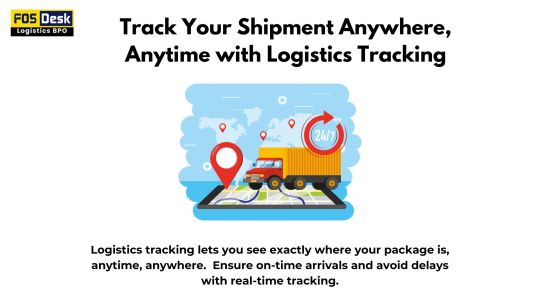
Never lose track of your shipment again! Logistics tracking lets you see exactly where your package is, anytime, anywhere. Get peace of mind and avoid delays with real-time updates. Track your deliveries with ease using popular logistics tracking services.
#transportation#import#export#logistics#freightforwarding#freight forwarding#supply chain management#delivery#pickup#shipment tracking software
0 notes
Text
The Importance of Safe Parcel Handling: How Franch Express Protects Your Shipments
In today’s fast-paced world, logistics and courier services are crucial in ensuring that packages reach their destinations safely and on time. Whether it’s important documents, fragile goods, or high-value items, safe parcel handling is essential to prevent damage, loss, or delays. At Franch Express Courier Pvt. Ltd., we prioritize secure and reliable delivery by implementing industry best practices.

How Franch Express Ensures Safe Parcel Handling
1. Professional Packaging Guidelines
Proper packaging is the first step to ensuring parcel safety. We provide:
Reinforced Boxes – Sturdy cartons for secure package delivery service.
Cushioning Materials – Bubble wrap, foam padding, and air pockets for fragile items.
Clear Labelling – ‘Fragile’ and ‘Handle with Care’ labels for delicate shipments.
Tamper-Proof Security Measures – Ensures the package is delivered in its original condition.
For customers unsure about proper packaging, our team offers guidance and packaging solutions to minimize damage risks.
2. Trained Handling & Logistics Team
Our delivery personnel undergo specialized training to ensure careful handling at every stage:
Safe loading and unloading procedures.
Use of material handling equipment for heavy or sensitive shipments.
Strict compliance with handling protocols for fragile and high-value items.
By following structured guidelines, our team minimizes the risk of mishandling and transit-related damage.
3. Advanced Tracking & Monitoring
We offer real-time courier tracking so customers can monitor their parcels at every step:
GPS-Enabled Tracking – Ensures transparency and location updates.
Automated Notifications – Alerts on pickup, transit, and delivery status.
Instant SMS & WhatsApp Notifications – Get timely alerts on shipment status, estimated delivery, and updates.
Customers can check their shipment’s status via our online tracking system, ensuring peace of mind.
4. Secure Warehousing & Sorting Facilities
At Franch Express, our warehouses logistics service and sorting centers are equipped with:
Climate-Controlled Storage – Protects temperature-sensitive shipments.
24/7 CCTV Surveillance – Monitors packages to prevent mishandling.
Systematic Sorting & Handling – Reduces delays and minimizes human errors.
These measures ensure smooth processing and prevent accidental damage or misplacement.
5. Insurance & Damage Protection
For added security, we offer shipment insurance courier service options, allowing customers to:
Insure valuable items against damage or loss.
Receive compensation in case of unforeseen incidents.
Ship with confidence, knowing their package is protected.
At Franch Express, we are committed to delivering your parcels safely and efficiently. Whether you’re a business or an individual sender, our advanced safety measures ensure that your shipments reach their destination without damage or delays.
#courier company#courier service#courier service near me#courierdelivery#franch express courier#safe parcel handling#courier service management software bd#logistics courier company#best courier company in tamilnadu#best courier company in chennai#safe and secure#tracking your shipment
0 notes
Text
Boost Efficiency with Shipment Tracking Technology | Advanced Load Management Tips
Discover how shipment tracking technology revolutionizes load management and boosts profitability for freight companies. iTruckDispatch’s blog explores the benefits of advanced load management tools, from real-time tracking to optimized routes. Learn how these innovations enhance efficiency, reduce costs, and improve customer satisfaction. Visit our blog to uncover the secrets of efficient load management and take your logistics operations to the next level with cutting-edge technology.
#Shipment tracking technology#advanced load management#tracking app#load tracking app#fleet management solution#carrier tracking#dispatch software
0 notes
Text
0 notes
Text
Revolutionizing Logistics: The Strategic Integration of BPO Services
In the fast-paced world of logistics, companies are increasingly turning to Business Process Outsourcing (BPO) services to navigate challenges, streamline operations, and foster sustained growth. This blog explores the how and whys behind the utilization of BPO services in the logistics sector.

Unpacking the Dynamics of Logistics Business Process Outsourcing
1. Enhancing Operational Efficiency
At the core of Logistics Business Process Outsourcing lies a commitment to enhancing operational efficiency. Logistics companies leverage BPO services to streamline intricate processes, from order management to inventory control. This strategic move allows these companies to focus on their core competencies while experts handle the nuances of logistics operations.
2. Optimizing Costs for Scalability
Cost optimization is a driving force behind the adoption of Logistics Business Process Outsourcing. Logistics companies can scale their operations without the burden of significant overhead costs. BPO services offer a cost-effective solution for scalability, allowing businesses to align their resources with the demands of a dynamic market without compromising profitability.
LOGISTICS BACK OFFICE: A Strategic Backbone
1. Efficient Data Management
The LOGISTICS BACK OFFICE becomes a strategic backbone for logistics companies, especially in terms of efficient data management. BPO services specialize in handling vast amounts of data, ensuring accuracy, compliance, and timely reporting. This data-centric approach empowers logistics companies with actionable insights for informed decision-making.
2. Navigating Regulatory Compliance
Logistics Back Office Services play a pivotal role in navigating the complex web of regulatory compliance. From customs documentation to adherence to international shipping standards, BPO services ensure that logistics companies operate within the bounds of regulations. This meticulous approach minimizes risks and positions businesses for global success.
The Strategic Integration of Logistics Back Office Services
1. Harnessing Technological Advancements
The utilization of Logistics Back Office Services is synonymous with harnessing technological advancements. BPO providers leverage state-of-the-art technologies, including automation and analytics, to optimize logistics processes. This tech-savvy integration ensures precision, speed, and adaptability in the face of evolving market demands.
2. Strategic Focus on Core Competencies
The strategic integration of Logistics Back Office Services allows logistics companies to maintain a laser focus on core competencies. Whether it's refining supply chain strategies, optimizing transportation routes, or enhancing customer experiences, BPO services become the operational backbone that handles non-core functions with unparalleled expertise.
Conclusion: Redefining Logistics Excellence
In conclusion, Logistics Business Process Outsourcing, especially through the utilization of LOGISTICS BACK OFFICE Services, emerges as a transformative strategy for logistics companies. By enhancing efficiency, optimizing costs, and strategically integrating back-office support, businesses redefine logistics excellence in a competitive landscape.
As logistics companies embrace the symbiotic relationship with BPO services, they not only navigate operational challenges but also position themselves as agile, tech-driven, and poised for sustained growth. The strategic integration of Logistics Back Office Services is not merely a trend; it's a paradigm shift that propels logistics companies toward a future defined by operational excellence and global competitiveness.
#Logistics Business Process Outsourcing#LOGISTICS BACK OFFICE#Logistics Back Office Services#logistics bpo services#transportation back office#track and trace shipment#TRACK AND TRACE MONITORING#claim processing outsourcing#saas transportation management system#command logistics services#Trucking Dispatch Companies#Bpo services#Support center#Support ticket system#Live chat support#Online support#Customer support software#Healthcare bpo#Healthcare business process outsourcing#load board outsourcing#end to end supply chain#Data entry outsourcing#Business process outsourcing companies#Customer support outsourcing#claim managament#Bpo solutions#Customer support solutions
0 notes
Text
The Imperative Role of EDI, APIs, and Custom Software Engineering in Shipment Tracking Solutions
In the dynamic landscape of shipment tracking solutions, the imperative role of EDI (Electronic Data Interchange), APIs (Application Programming Interfaces), and custom software engineering takes center stage. This insightful article explores how these technological pillars synergize to optimize logistics operations, enhance real-time visibility, and streamline communication across the supply chain. Unraveling the complexities of modern shipping, the piece from tntra.io delves into the transformative impact of EDI, the connectivity prowess of APIs, and the tailored solutions crafted through custom software engineering. Discover how these key elements converge to propel the efficiency and effectiveness of cutting-edge shipment tracking systems.
0 notes
Text
Streamlining Shipment Tracking

Streamlining Shipment Tracking involves optimizing the processes and technologies used to monitor and manage the movement of goods from origin to destination. It aims to enhance efficiency, accuracy, and visibility throughout the supply chain. By integrating advanced tracking systems, real-time data analytics, and automated notifications, Streamlining Shipment Tracking ensures timely updates on shipment status, location, and potential delays. This comprehensive approach enables businesses to make informed decisions, proactively address issues, and provide customers with up-to-date information. Effective Streamlining Shipment Tracking enhances customer satisfaction, reduces operational bottlenecks, and fosters better collaboration among stakeholders. Employing modern solutions like IoT devices and cloud-based platforms supports this initiative, ultimately resulting in a streamlined and transparent shipping process.
#Shipment Tracking#Software#Logistics#TMS#Fretron#TMS Logistics#Transportation management Software#transport management system
1 note
·
View note
Text
Features of Shipment Tracking Software
Shipment tracking software streamlines the whole supply chain processes- from delivering the most optimized highways to sending customer alerts connected to shipment processes. With enhanced transparency, businesses can smoothly work together with other stakeholders like warehouse executives and distributors to speed up enterprise growth.
Transportation Expenditures
Shipment tracking software restricts the digit of false deliverables, awfully decreasing the all-around transportation expense. This, in turn, saves a lot of capital and can be used for re-warehousing, repository, and transportation. In addition, firms can now track all actions related to shipping, permitting better communication and answer to consumer objections as well as preventing them with the best shipment tracking software.
Tracking on a Real-Time Basis
Companies, as well as clients, can smoothly keep a tab on their packages on a real-time basis throughout the allotment chain. Moreover, in case of a wait in deliveries due to unpredictable circumstances, buyers are advised instantly for the same. Shipment tracking software acts as a one-stop solution to inspect information considering clearance, departure, arrival, and shipment status.
Advantages of Using Shipment Tracking Software
In the era of hyper-fast deliveries, keeping your customer posted considering the order status and ETA in real-time is a key differentiator in the logistics sector. Having reliable and strong shipment tracking software such as Carrier View facilitates firms to track and trace shipments in real-time and assure the operations function with utmost efficiency.
Listed below are some of the advantages of the best shipment tracking software for firms as well as customers.
Benefits to Company
Shipment tracking can benefit the company’s supply chain in words of visibility and monitoring, along with a host of other features.
· Reduction in the number of tickets printed by buyer support
· Confirm delivery for accounting purposes
· Streamlining the processes by combining them with an e-commerce platform
· Reducing the numeral of disappointed customers
Benefits to Customers
Customers on the end side of the supply chain can avail the following advantages by using freight tracking software.
· Immediate updates on shipping
· Tracking order level at any time during the day · Easy entry to positive feedback from customers
0 notes
Text
Echos of The Fallen

Chapter 3: Crimson Heist Shadow the Hedgehog x Reader Warnings: A little firting but thats it

September 30th - 7:45 AM - G.U.N. Headquarters
The remnants of the explosion still hung in the air, the scent of charred metal and burnt rubber clinging to Shadow’s uniform as he stepped into the war room. The monitors on the walls flickered with the latest updates—feeds from the wreckage site, reports from analysts trying to piece together what little information they had. The entire building seemed to hum with tension, the weight of last night’s failure pressing down on everyone inside.
Rouge was already seated at the long metal table, idly examining her nails as she waited for him. Omega stood nearby, his mechanical frame motionless save for the occasional whir of servos adjusting his position. The moment Shadow entered, Rouge glanced up, arching a perfectly sculpted brow.
“Well, well,” she mused, tilting her head. “You look like hell.”
Shadow ignored her, dropping into the chair across from her and flicking open the latest intel file. “We lost her.” His voice was clipped, edged with irritation.
“No kidding.” Rouge smirked, leaning forward. “You let a woman get the best of you. Now that’s a first.”
Shadow’s crimson eyes narrowed. “She was ten steps ahead. The explosion was a diversion, and we took the bait.” His fingers drummed against the table, betraying his frustration. “She’s not just some rogue mercenary. She knows how we operate.”
Omega’s monotone voice rumbled to life. “RECOMMENDATION: TERMINATION OF TARGET UPON IDENTIFICATION.”
Rouge scoffed. “So dramatic. We don’t even know who she really is yet. ‘Danny’s wife’ doesn’t exactly lead us anywhere.”
Shadow turned the file toward her. “She’s connected to Cipher. That’s all we need to know.”
Rouge’s expression darkened slightly at the mention of the name. “So, Cipher’s making moves again. Last time he popped up, it took half of G.U.N.’s intelligence division to track down just one of his hideouts. If she’s working with him, she’s dangerous.”
“Obviously.” Shadow’s voice was tight. “The question is why. What does Cipher want with G.U.N.’s classified weapons project?”
Rouge shrugged, leaning back in her chair. “Power? Leverage? Or maybe he’s just bored. But something tells me your little rooftop admirer is more than just an errand girl.”
Shadow frowned. “What do you mean?”
Rouge’s smirk returned, playful and knowing. “She could’ve killed you last night, but she didn’t.”
Shadow remained silent, his jaw tightening. He had considered that already. The explosion had been designed to wound, to scatter forces, not to kill. If she had truly wanted him dead, she wouldn’t have left it to chance.
Omega interrupted the thought. “QUERY: NEXT COURSE OF ACTION?”
Shadow pushed the file toward the center of the table. “We find her. We stop her. No more games.”
September 30th - 10:12 PM - Underground Safehouse
The glow of multiple monitors bathed the dimly lit room in a soft blue hue, casting flickering shadows against the exposed concrete walls. The safehouse was tucked beneath the remnants of an abandoned subway station, far from prying eyes.
I sat in front of the main screen, scanning through lines of encrypted data as Zero worked his magic on the G.U.N. servers. The room was filled with the soft clacking of keys, the occasional beeping of software processes running in the background. Scar stood near the entrance, arms crossed, her gaze flicking between me and the screens.
“G.U.N. is scrambling,” Zero announced, his fingers flying across the keyboard. “They’ve got teams sweeping the city, but they’re running in circles.”
Scar smirked. “Shadow must be pissed.”
I didn’t react, my eyes still focused on the data. “Let him be. It won’t change anything.”
Zero’s hands stilled for a moment, his brow furrowing. “Hold up... This is new.”
I leaned forward. “What?”
He pulled up a series of documents, most of them redacted, but one detail stood out. A shipment manifest. Destination: G.U.N. Research Facility - Grid Sector Seven. Contents: Prototype X-09.
Scar whistled lowly. “Well, that sounds interesting.”
I exhaled slowly, my mind racing. “That’s what Carson was talking about.”
Zero nodded. “Whatever X-09 is, they’re keeping it locked down tight. I can't seem to find information on it. If G.U.N. wants it then that just makes it automatically bad.”
I tapped my fingers against my arm, calculating the next steps. “Then we move first. we break into the G.U.N. bank and steal some of their assets so they will be unable to fund this project anymore"
Scar raised an eyebrow. “You sure about that? If we intercept, we’ll be putting ourselves directly in Shadow’s path.”
A part of me hesitated, just for a fraction of a second. Then I pushed the thought aside. “Let him come. this time he won't know I know his turf.”
Zero cracked his knuckles, already preparing the next phase of the operation. “Then let’s get to work.”
Viper stood up, stretching her arms. "Alright, I’m grabbing food. Try not to blow anything up while I’m gone."
She slammed the door behind her, making the walls shake slightly. Nova immediately huffed, turning toward the door with an irritated glare. "Can you not? I’m working on an experiment!"
Viper’s voice called from the hallway, "Oh, I’m sorry, Princess! Didn’t mean to disrupt your evil genius time."
Nova scoffed. "At least I actually use my brain."
I rolled my eyes, shaking my head. "Guys, let’s be real. Unless you’re both on your period, let’s not bicker like this."
Nova shot me a glare, and Viper's laughter echoed from down the hall. "You wish, sweetheart!"
I smirked but turned back to the screens, my fingers hovering over the keyboard. The banter was familiar, almost comforting, but the weight of our situation pressed heavy on my mind. G.U.N. was moving fast, and we didn’t have time to waste.
Zero leaned back in his chair, exhaling sharply. "You really think we can pull this off?"
I didn’t answer right away, my eyes scanning over the shipment details. The security routes, the escort patterns—it was tight, but not impenetrable.
"We don’t have a choice," I finally said. "I do not trust them to have that weapon"
Scar crossed her arms, her gaze sharp. "And what happens when Shadow shows up?"
A beat of silence filled the room. That was the real problem. Shadow wasn’t like the grunts G.U.N. usually sent after us. He didn’t make mistakes. He didn’t let people slip through his fingers twice.
I exhaled. "Then we adapt."
The tension settled in the air, thick and unspoken. This wasn’t just another job—this was a battle waiting to happen.
The door creaked open again, and Viper strolled back in, holding a bag of takeout. "Alright, nerds, eat up. If we’re gonna risk our lives in forty-eight hours, you might as well not do it on an empty stomach."
Nova snatched the bag from her hands. "Finally, you’re useful for something."
Viper smirked. "Careful, Princess. Keep talking like that, and I might ‘accidentally’ forget your order next time."
As they bickered, I stared at the screens, the blueprint of the G.U.N. transport route flashing in front of me. This was it. The moment we made our move, there was no turning back.
I clenched my jaw, determination settling in.
We had forty-eight hours to pull off the impossible.
And failure wasn’t an option.

1:45 AM – G.U.N. Financial Holdings, Downtown
Everything had been going smoothly—too smoothly. Scar and I had just finished loading the last of the stolen assets into our bags when a sharp, high-pitched beep cut through the silence.
"Tell me that wasn’t you," Scar muttered.
I looked down at my wrist device, where a flashing red warning glowed across the screen. Silent alarm triggered.
"Shit," I hissed. "We need to move—now."
We bolted for the exit, weaving through the dimly lit corridors of the underground vault. But as we reached the stairwell, the sound of approaching footsteps echoed through the space. Heavy. Coordinated. Armed.
Scar gritted her teeth. "They’re fast."
"They’re G.U.N.," I shot back. "Of course they are."
We reached the main hall just as the security doors slammed shut behind us. A single figure stepped through the haze of flashing red lights. Black and red. Sharp crimson eyes locked onto mine.
Shadow.
Behind him, his team—Rouge and Omega—stood ready, blocking the only other exit.
"You really thought you could just waltz in and take what you wanted?" Shadow’s voice was low, measured, but there was an edge of irritation in it. "You’re getting sloppy."
Scar and I exchanged glances before moving in opposite directions. Shadow’s eyes flicked between us, assessing. Calculating.
"Take them," he ordered.
Rouge lunged for Scar while Omega charged forward, aiming straight for me. I dodged, ducking behind a pillar as his massive arm smashed through it like it was paper.
As Omega charged toward me, I tried to dodge his powerful swing again, but this time I had a better idea.
"Geez, Omega, you ever think about toning it down?" I taunted, hoping to get under his circuits. He growled in response, tightening his grip.
"NEGATIVE," Omega boomed, his voice full of pure mechanical rage. "FULL DESTRUCTION MODE ENGAGED."
I couldn’t avoid his next hit in time, so I took a deep breath, waiting for the right moment. Omega swung harder, and this time, his fist collided with a wall near Rouge, sending debris flying everywhere.
A vulnerable moment.
Before he could adjust, I whipped out a small device from my belt. With a quick motion, I slapped it onto Omega's back. The device activated with a small electric buzz, sending a surge of energy into his system, causing his circuits to short-circuit and his movements to freeze.
Omega's massive frame shuddered, and his body froze in place. The once-booming voice became erratic. "ERROR. SYSTEM MALFUNCTION..."
I gave a sly grin. "Guess I’ll have to remind you how to play nice."
I turned just in time to see Shadow coming for me. Fast. I barely managed to block his first strike, but the sheer force sent me skidding back. He was relentless, each blow more precise than the last.
He feinted left before sweeping my legs out from under me. Before I could react, I was flat on my back, Shadow pinning me down, one knee pressing into my ribs, his hand gripping my wrist.
I struggled, but he didn’t budge. "Give it up," he said. "You’re done."
My mind raced. I needed a distraction. Something to throw him off—just for a second.
I locked eyes with him, smirking. "You gonna kiss me or something, handsome?"
Shadow’s expression flickered. Just for a second. A flash of confusion.
That was all I needed.
I drove my knee into his stomach, making him grunt in surprise. Using the momentum, I twisted us around, grabbing a pair of cuffs from my belt. Before he could recover, I snapped them around his wrist and slammed the other end to a reinforced pipe. The cuffs magnetized instantly, locking him in place.
His eyes widened slightly as he tested the restraints.
I grinned. "Gotta say, I didn’t expect you to be so easy to trap."
Shadow glared at me, but there was the faintest trace of pink on his face.
Scar broke free from Rouge’s grip, sprinting toward me. "We need to go!"
I pulled a smoke bomb from my belt, slamming it against the ground. Thick clouds engulfed the room, obscuring everything.
"See you around, handsome," I teased, before grabbing Scar’s wrist and making a break for the exit.
We darted through the emergency hatch we had scoped out earlier, leaving chaos in our wake. The sound of Shadow yanking at the cuffs and Omega’s booming voice echoed behind us, but we were already gone, disappearing into the night.
2:30 AM – Warehouse Hideout
We crashed through the doors, breathless, adrenaline still surging through our veins.
Zero looked up from his laptop. "I take it things didn’t go as planned?"
Scar dropped her bag onto the table, grinning. "Oh, it went great. Got the goods, fought Shadow, and someone got a little flirty mid-fight."
I rolled my eyes, slumping into a chair. "It was a tactical distraction."
Scar snorted. "Sure it was."
Viper raised an eyebrow. "Wait—you flirted with Shadow?"
Nova nearly choked on her drink. "Hold on, back up. Shadow the Hedgehog?"
I groaned, burying my face in my hands. "I’m going to regret this later."
Scar smirked, kicking her feet up onto the table. "Maybe. But for now? Totally worth it."

3:00 AM – G.U.N. Financial Holdings, Downtown
Shadow's POV
The smoke was thick, the echoes of their escape still ringing in my ears. I yanked futilely at the cuffs, feeling the cold metal dig into my wrist. They were designed to hold even the strongest, and for once, it seemed they might have me. But I didn’t have time to waste on my restraints. I had a bigger problem on my hands.
Omega was down, his system glitching from whatever trick that woman had pulled on him. He was muttering about malfunctions as Rouge approached me, her footsteps sharp and mocking.
“Well, that was quite the show, Shadow,” she said, her voice dripping with amusement.
I narrowed my eyes at her, trying to ignore the frustration bubbling inside me. “Save it, Rouge.”
She leaned in closer, her lips curling into a playful smirk. “Not so tough when you're distracted, huh? You got all flustered with her little stunt. Was that... flirtation? You know, I’ve seen you fight harder. Looks like someone’s got a soft spot.”
I could feel my pulse spike, irritation mixing with something I couldn’t quite place. "This isn't the time for your games."
Rouge raised an eyebrow, clearly enjoying my discomfort. "Oh, I’m not joking. You practically let her tie you up. Seems like you let your guard down for something more than just the mission."
I grit my teeth, pushing back the surge of heat in my chest. “She got lucky. That’s all.”
But Rouge wasn’t done. “Sure, sure. I mean, she’s pretty good, I’ll give her that. Had to be quick thinking to get you like that.” Her eyes twinkled as she surveyed the room, her gaze shifting from me to Omega’s malfunctioning state. "But the real question is—how did she even know how to get past all the security systems? Couldn’t have been just luck."
A thought clicked into place, something I hadn’t fully processed in the heat of the moment. The woman’s movements, the way she seemed to be one step ahead, even the tech on her person—it all seemed too familiar. My mind whirred.
“Wait...” I muttered, looking toward Rouge. “She... she knew too much about our systems. She moved like someone who’d been trained to break into places like this.”
Rouge leaned against a wall, watching me. “You think she was G.U.N. trained?” she asked, raising an eyebrow, clearly amused.
“Impossible,” I muttered under my breath, but the more I thought about it, the more it made sense. Her style, her tactics—everything about her reeked of G.U.N. precision, just twisted in a way I hadn’t expected.
“I don’t know, Shadow,” Rouge said, her voice softer now, more serious. “Maybe we should start asking the right questions. Why would someone like her target a G.U.N. facility... and why are we just now seeing her face?”
I clenched my fists, the truth dawning on me. “We’re missing something. Whoever she is, she’s connected to G.U.N. in ways we don’t understand yet.”
Rouge gave me a knowing look, her smirk fading into something more thoughtful. “You think this is the beginning of something bigger?”
I nodded, my gaze shifting back to where Scar and the woman had vanished. “It’s more than just a heist. It’s personal now.”

Guys be honest im trying to find a good length for the chapters i believe this is fine but please let me know
- Caty
58 notes
·
View notes
Text
Shortly before noon on Aug. 19, 2023, a Russian cruise missile sliced past the golden onion domes and squat apartment blocks of the Chernihiv skyline in northern Ukraine. The Iskander-K missile slammed into its target: the city’s drama theater, which was hosting a meeting of drone manufacturers at the time of the attack. More than 140 people were injured and seven killed. The youngest, 6-year-old Sofia Golynska, had been playing in a nearby park.
Fragments of the missile recovered by the Ukrainian armed forces and analyzed by Ukrainian researchers found numerous components made by U.S. manufacturers in the missile’s onboard navigation system, which enabled it to reach its target with devastating precision. In December, Ukraine’s state anti-corruption agency released an online database of the thousands of foreign-made components recovered from Russian weapons so far.
Russia’s struggle to produce the advanced semiconductors, electrical components, and machine tools needed to fuel its defense industrial base predates the current war and has left it reliant on imports even amid its estrangement from the West. So when Moscow launched its full-scale invasion of Ukraine in February 2022, major manufacturing countries from North America, Europe, and East Asia swiftly imposed export controls on a broad swath of items deemed critical for the Russian arms industry.
Russia quickly became the world’s most sanctioned country: Some 16,000 people and companies were subject to a patchwork of international sanctions and export control orders imposed by a coalition of 39 countries. Export restrictions were painted with such a broad brush that sunglasses, contact lenses, and false teeth were also swept up in the prohibitions. Even items manufactured overseas by foreign companies are prohibited from being sold to Russia if they are made with U.S. tools or software, under a regulation known as the foreign direct product rule.
But as the war reaches its two-year anniversary, export controls have failed to stem the flow of advanced electronics and machinery making their way into Russia as new and convoluted supply chains have been forged through third countries such as Kazakhstan, Turkey, and the United Arab Emirates, which are not party to the export control efforts. An investigation by Nikkei Asia found a tenfold increase in the export of semiconductors from China and Hong Kong to Russia in the immediate aftermath of the war—the majority of them from U.S. manufacturers.
“Life finds a way,” said a senior U.S. intelligence official, quoting the movie Jurassic Park. The official spoke on background to discuss Russia’s evasion of export controls.
Some of the weapons and components analyzed by investigators were likely stockpiled before the war. But widely available Russian trade data reveals a brisk business in imports. More than $1 billion worth of advanced semiconductors from U.S. and European manufacturers made their way into the country last year, according to classified Russian customs service data obtained by Bloomberg. A recent report by the Kyiv School of Economics found that imports of components considered critical for the battlefield had dipped by just 10 percent during the first 10 months of 2023, compared with prewar levels.
This has created a Kafkaesque scenario, the report notes, in which the Ukrainian army is doing battle with Western weapons against a Russian arsenal that also runs on Western components.
It is an obvious problem, well documented by numerous think tank and media reports, but one without an easy solution. Tracking illicit trade in items such as semiconductors is an exponentially greater challenge than monitoring shipments of conventional weapons. Around 1 trillion chips are produced every year. Found in credit cards, toasters, tanks, missile systems, and much, much more, they power the global economy as well as the Russian military. Cutting Russia out of the global supply chain for semiconductors is easier said than done.
“Both Russia and China, and basically all militaries, are using a large number of consumer electronic components in their systems,” said Chris Miller, the author of Chip War: The Fight for the World’s Most Critical Technology. “All of the world’s militaries rely on the same supply chain, which is the supply chain that primarily services consumer electronics.”
Export controls were once neatly tailored to keep specific items, such as nuclear technology, out of the hands of rogue states and terrorist groups. But as Washington vies for technological supremacy with Beijing while also seeking to contain Russia and Iran, it has increasingly used these trade restrictions to advance broader U.S. strategic objectives. For instance, the Biden administration has placed wide-ranging prohibitions on the export of advanced chips to China.
“At no point in history have export controls been more central to our collective security than right now,” Matthew Axelrod, the assistant secretary for export enforcement at the U.S. Commerce Department, said in a speech last September. U.S. National Security Advisor Jake Sullivan has described export controls as “a new strategic asset in the U.S. and allied toolkit.”
Russia’s ability to defy these restrictions doesn’t just have implications for the war in Ukraine. It also raises significant questions about the challenge ahead vis-à-vis China.
“The technological question becomes a key part of this story and whether or not we can restrict it from our adversaries,” said James Byrne, the director of open-source intelligence and analysis at the Royal United Services Institute, a British think tank.
In the Russian city of Izhevsk, home to the factory that manufactures Kalashnikov rifles, shopping malls are being converted into drone factories amid a surge in defense spending that has helped the country’s economy weather its Western estrangement. Arms manufacturers have been urged to work around the clock to feed the Russian war machine, while defense is set to account for one-third of the state budget this year.
“We have developed a concept to convert shopping centers—which, before the start of the SMO [special military operation], sold mainly the products of Western brands—to factories for assembly lines of types of domestic drones,” Alexander Zakharov, the chief designer of the Zala Aero drone company, said at a closed event in August 2022, according to the Russian business newspaper Vedomosti. “Special military operation” is what the Russian government calls its war on Ukraine. Zala Aero is a subsidiary of the Kalashnikov Concern that, along with Zakharov, was sanctioned by the United States last November.
Defense companies have bought at least three shopping malls in Izhevsk to be repurposed for the manufacture of drones, according to local media, including Lancet attack drones, which the British defense ministry described as one of the most effective new weapons that Russia introduced to the battlefield last year. Lancets, which cost about $35,000 to produce, wreaked havoc during Ukraine’s offensive last year and have been captured on video striking valuable Ukrainian tanks and parked MiG fighter jets.
Like a lot of Russia’s weapons systems, Lancets are filled with Western components. An analysis of images of the drones published in December by the Washington-based Institute for Science and International Security found that they contained several parts from U.S., Swiss, and Czech manufacturers, including image processing and analytical components that play a pivotal role in enabling the drones to reach their targets on the battlefield.
“The recurring appearance of these Western products in Russian drone systems shows a keen dependence on them for key capabilities in the drone systems,” the report notes. Lancets are not the only drones found to contain Western components. Almost all of the electronic components in the Iranian Shahed-136 drones, which Russia is now manufacturing with Iranian help to use in Ukraine, are of Western origin, a separate analysis published in November concluded.
Early in the war, the Royal United Services Institute analyzed 27 Russian military systems, including cruise missiles, electronic warfare complexes, and communications systems, and found that they contained at least 450 foreign-made components, revealing Russia’s dependence on imports.
One of the principal ways that Russia has evaded Western export controls has been through transshipment via third countries such as Turkey, the UAE, and neighboring states once part of the Soviet Union. Bloomberg reported last November that amid mounting Western pressure, the UAE had agreed to restrict the export of sensitive goods to Russia and that Turkey was considering a similar move. Kazakh officials announced a ban on the export of certain battlefield goods to Russia in October.
Suspected transshipment is often revealed by striking changes in trade patterns before and after the invasion. The Maldives, an island chain in the Indian Ocean that has no domestic semiconductor industry, shipped almost $54 million worth of U.S.-made semiconductors to Russia in the year after the invasion of Ukraine, Nikkei Asia reported last July.
Semiconductor supply chains often span several countries, with chips designed in one country and manufactured in another before being sold to a series of downstream distributors around the world. That makes it difficult for companies to know the ultimate end user of their products. This may seem odd—until you realize that this is the case for many everyday products that are sold around the world. “When Coca-Cola sells Coca-Cola, it doesn’t know where every bottle goes, and they don’t have systems to track where every bottle goes,” said Kevin Wolf, a former assistant secretary for export administration at the U.S. Commerce Department.
While a coalition of 39 countries, including the world’s major manufacturers of advanced electronics, imposed export restrictions on Russia, much of the rest of the world continues to trade freely with Moscow. Components manufactured in coalition countries will often begin their journey to Moscow’s weapons factories through a series of entirely legal transactions before ending up with a final distributor that takes them across the border into Russia. “It starts off as licit trade and ends up as illicit trade,” said a second senior U.S. intelligence official, who spoke on condition of anonymity.
The further items move down the supply chain, the less insight governments and companies have into their ultimate destination, although sudden changes in behavior of importers can offer a red flag. In his speech last September, Axelrod, the assistant secretary, used the example of a beauty salon that suddenly starts to import electronic components.
But the Grand Canyon of loopholes is China, which has stood by Moscow since the invasion. In the first days of the war, U.S. Commerce Secretary Gina Raimondo warned that Washington could shut down Chinese companies that ignored semiconductor export controls placed on Russia. Last October, 42 Chinese companies were added to export control lists—severely undercutting their ability to do business with U.S. companies—for supplying Russian defense manufacturers with U.S. chips.
But as the Biden administration carefully calibrates its China policy in a bid to keep a lid on escalating tensions, it has held off from taking Beijing to task. “I think the biggest issue is that we—the West—have been unwilling to put pressure on China that would get China to start enforcing some of these rules itself,” said Miller, the author of Chip Wars.
A spokesperson for the U.S. Commerce Department’s Bureau of Industry and Security (BIS) said: “Due to the restrictions imposed by the United States and key allies and partners, Russia has been left with no choice but to spend more, lower its ambitions for high-tech weaponry, build alliances with other international pariah states, and develop nefarious trade networks to covertly obtain the technologies it needs.
“We are deeply concerned regarding [Chinese] support for Russia’s defense industrial base. BIS has acted to add over 100 [China]-based entities to the Entity List for supporting Russia’s military industrial base and related activities.”
Export controls have typically focused on keeping specific U.S.-made goods out of the hands of adversaries, while economic and financial sanctions have served broader foreign-policy objectives of isolating rogue states and cauterizing the financing of terrorist groups and drug cartels. The use of sanctions as a national security tool grew in wake of the 9/11 attacks; in the intervening decades, companies, government agencies, and financial institutions have built up a wealth of experience in sanctions compliance. By contrast, the use of export controls for strategic ends is relatively novel, and compliance expertise is still in its infancy.
“It used to be that people like me could keep export controls and sanctions in one person’s head. The level of complexity for each area of law is so intense. I don’t know anyone who is truly an export control and sanctions expert,” Wolf said.
Export controls, experts say, are at best speed bumps designed to make it harder for Russia’s defense industrial base to procure Western components. They create “extra friction and pressure on the Russian economy,” said Daniel Fried, who as the State Department coordinator for sanctions policy helped craft U.S. sanctions on Russia after its annexation of Crimea in 2014. Russia is now paying 80 percent more to import semiconductors than it did before the war, according to forthcoming research by Miller, and the components it is able to acquire are often of dubious quality.
But although it may be more cumbersome and expensive, it’s a cost that Moscow has been willing to bear in its war on Ukraine.
Western components—and lots of them—will continue to be found in the weapons Russia uses on Ukraine’s battlefields for the duration of the war. “This problem is as old as export controls are,” said Jasper Helder, an expert on export controls and sanctions with the law firm Akin Gump. But there are ways to further plug the gaps.
Steeper penalties could incentivize U.S. companies to take a more proactive role in ensuring their products don’t wind up in the hands of the Russian military, said Elina Ribakova, a nonresident senior fellow at the Peterson Institute for International Economics. “At the moment, they’re not truly motivated,” she said.
Companies that run afoul of sanctions and the Foreign Corrupt Practices Act, a U.S. federal law that prohibits the payment of bribes, have been fined billions of dollars. Settlements of export control violations are often an order of magnitude smaller, according to recently published research.
In a speech last month, Axelrod said the United States would begin issuing steeper penalties for export control violations. “Build one case against one of the companies extremely well, put out a multibillion-dollar fine negotiation, and watch everybody else fall in line,” Ribakova said.
And then there’s the question of resources. BIS has an annual budget of just $200 million. “That’s like the cost of a few fighter jets. Come on,” said Raimondo, speaking at the Reagan National Defense Forum last December.
The agency’s core budget for export control has, adjusted for inflation, remained flat since 2010, while its workload has surged. Between 2014 and 2022, the volume of U.S. exports subject to licensing scrutiny increased by 126 percent, according to an agency spokesperson. A 2022 study of export control enforcement by the Center for Strategic and International Studies recommended a budget increase of $45 million annually, describing it as “one of the best opportunities available anywhere in U.S. national security.”
When it comes to enforcement, the bureau has about 150 officers across the country who work with law enforcement and conduct outreach to companies. The Commerce Department has also established a task force with the Justice Department to keep advanced technologies out of the hands of Russia, China, and Iran. “The U.S. has the most robust export enforcement on the planet,” Wolf said.
But compared with other law enforcement and national security agencies, the bureau’s budgets have not kept pace with its expanding mission. The Department of Homeland Security has more investigators in the city of Tampa, Florida, than BIS does across the entire country, Axelrod noted in his January speech.
On the other side, you have Russia, which is extremely motivated to acquire the critical technologies it needs to continue to prosecute its war. The Kremlin has tasked its intelligence agencies with finding ways around sanctions and export controls, U.S. Treasury Undersecretary Brian Nelson said in a speech last year. “We are not talking about a profit-seeking firm looking for efficiencies,” the second senior U.S. intelligence official said. “There will be supply if there is sufficient demand.”
18 notes
·
View notes
Text
GIS In Our Daily Lives
The involvement of Geographic Information Systems (GIS) in our daily lives is pervasive, influencing and enhancing various aspects across different sectors. The integration of GIS into everyday activities has become integral for decision-making, planning, and optimizing resources. GIS helps city planners and transportation experts to provide them with information like maps, satellite pictures, population statistics, and infrastructure data. GIS helps them make better decisions when designing cities and transportation systems that are sustainable and good for the environment.
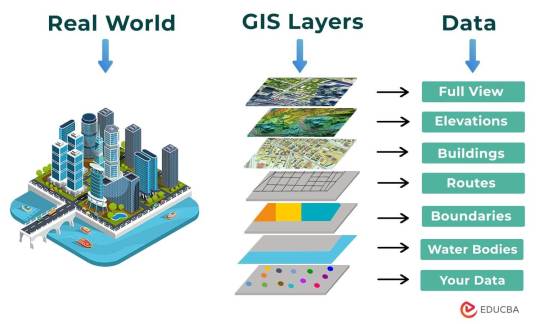
The following points elucidate the notable involvement of GIS in our daily lives:
Navigation and Location Services: GIS provides monitoring functions through the visual display of spatial data and precise geographical positioning of monitored vehicles, whereas GPS provides accurate, clear, and precise information on the position and navigation of a monitored or tracked vehicle in real-time and at the exact location.GIS is at the core of navigation applications and location-based services on smartphones. It enables accurate mapping, real-time navigation, and geolocation services, assisting individuals in finding locations, planning routes, and navigating unfamiliar areas.
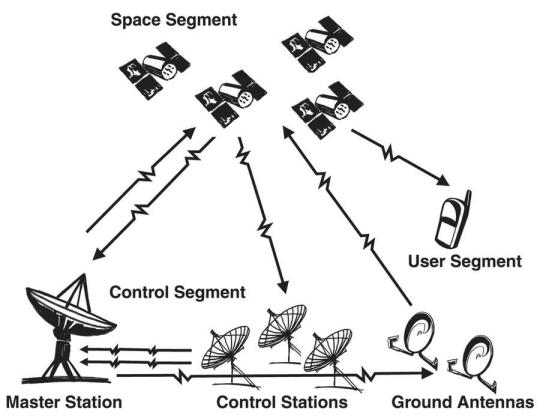
E-Commerce and Delivery Services: GIS software is a powerful tool for supply chain network planning. It helps determine the optimal location for distribution centers, warehouses, or other supply facilities. GIS is utilized in logistics and delivery services for optimizing routes, tracking shipments, and ensuring timely deliveries. E-commerce platforms leverage GIS to enhance the efficiency of their supply chain and last-mile delivery processes.
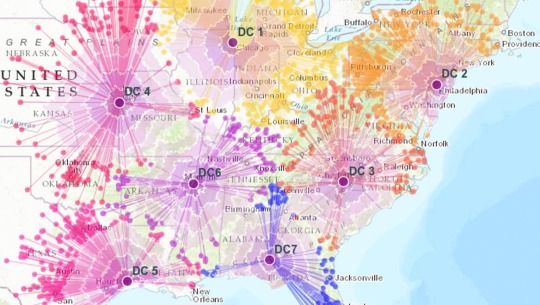
Weather Forecasting and Disaster Management: Many states are using GIS dashboard to monitor the rainfall across the state, on a real-time basis, from the data shared by rain sensors installed at various locationsGIS plays a crucial role in weather forecasting and disaster management. It assists meteorologists in analyzing spatial data, predicting weather patterns, and facilitating timely responses to natural disasters by mapping affected areas and coordinating emergency services.

Healthcare Planning and Disease Monitoring: Geographic Information Systems enable the visualization and monitoring of infectious diseases. Additionally GIS records and displays the necessary information that health care needs of the community as well as the available resources and materials. GIS supports public health initiatives by mapping the spread of diseases, analyzing healthcare resource distribution, and assisting in the planning of vaccination campaigns. It aids in identifying high-risk areas and optimizing healthcare service delivery.
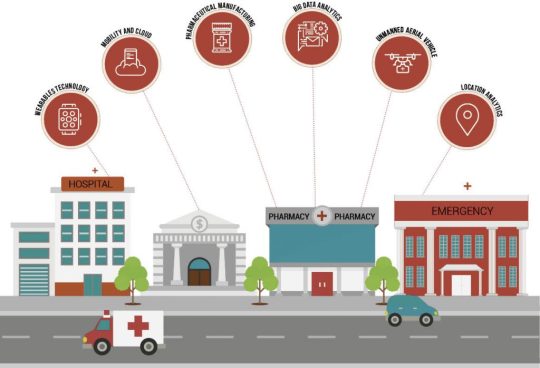
Social Media and Geo-tagging: GIS also helps in geotagging and other location related information in posts, it’s tools can map and visualize the spatial distribution of social media activity. This analysis can reveal trends, hotspots, and patterns in user engagement across different geographic areas. Many social media platforms incorporate GIS for geo-tagging, allowing users to share their location and experiences. This feature enhances social connectivity and facilitates the sharing of location-specific information.
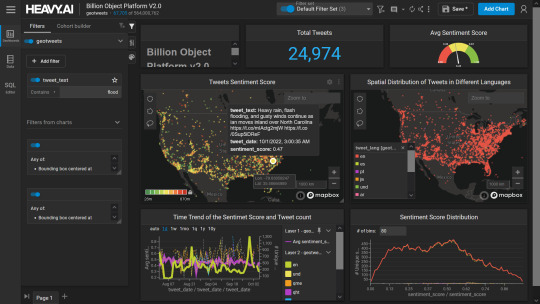
Smart City Initiatives: The Geographic Information System (GIS) offers advanced and user-friendly capabilities for Smart City projects and allows to capture, store and manipulate, analyze and visualize spatially referenced data. It is used for spatial analysis and modeling. It is the cornerstone of smart city planning, enabling the integration of data for efficient urban management. It supports initiatives related to traffic management, waste disposal, energy consumption, and overall infrastructure development.

Education and Research: GIS is increasingly utilized in education and research for visualizing and analyzing spatial data. It enables students and researchers to explore geographic relationships, conduct field studies, and enhance their understanding of various subjects.

Agricultural Management and Precision Farming: Farmers leverage GIS to optimize agricultural practices by analyzing soil conditions, crop health, and weather patterns. Precision farming techniques, facilitated by GIS, contribute to increased crop yields and sustainable farming practices.

Real Estate and Property Management: In the real estate sector, GIS aids in property mapping, land valuation, and site selection. It provides real estate professionals with valuable insights into spatial relationships, market trends, and optimal development opportunities.
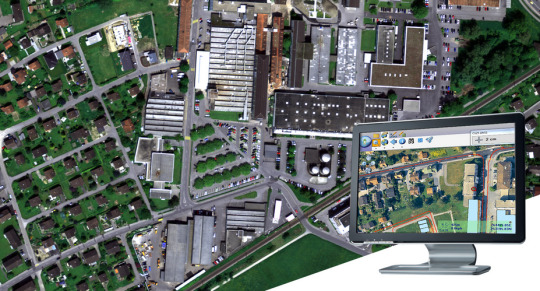
Tourism and Recreation: GIS enhances the tourism industry by providing interactive maps, route planning, and location-based information. It assists tourists in exploring destinations, finding attractions, and navigating efficiently.

The broad and varied involvement of GIS in our daily lives underscores its significance as a technology that not only facilitates geographic data analysis but also contributes to the efficiency, safety, and interconnectedness of modern society. As GIS applications continue to evolve, their impact on daily activities is expected to further expand and refine.
#gis#architectdesign#architecture#city#education#geographic information system(gis)#geographical indication
13 notes
·
View notes
Text
issuu
Explore how Shipment Tracking Software can help you reduce risks during your logistics journey. This article reveals how this software is an important partner in risk management, ranging from real-time discovery to active issue resolution, improved communication, and decision-making based on data. Find out how it affects ETA forecasts, compliance, communication with resources, security, and comprehensive risk assessment. With or without Shipment Tracking Software, it may be impossible to protect shipments from unexpected challenges in case you are a small business or global enterprise. Be sure to make your way across the challenging logistics terrain armed with this important instrument.
#logistics software tools#logistics software solution#logistics software tool#shipment#shipment tracking software
0 notes
Text
As a trucker, you can perform various tasks within truck dispatching:
*Primary Responsibilities:*
1. Receive and accept load assignments from dispatchers.
2. Review load details, routes, and schedules.
3. Plan and navigate routes using GPS and maps.
4. Manage cargo, including loading/unloading and securement.
5. Comply with safety regulations, hours of service, and company policies.
6. Communicate with dispatchers, shippers, and receivers.
7. Update dispatchers on shipment status and any issues.
*Additional Tasks:*
1. Pre-trip inspections: ensure vehicle safety and compliance.
2. Fuel management: optimize fuel efficiency and costs.
3. Maintenance scheduling: coordinate vehicle maintenance.
4. Logkeeping: maintain accurate records of hours, miles, and cargo.
5. Customer service: interact with shippers, receivers, and brokers.
6. Route optimization: suggest alternative routes or improvements.
7. Load optimization: maximize cargo capacity and revenue.
*Technology Used:*
1. Electronic Logging Devices (ELDs)
2. GPS tracking systems
3. Mobile apps (e.g., Trucker Path, TruckStop)
4. Fleet management software (e.g., TMW, McLeod)
5. Communication platforms (e.g., phone, email, messaging apps)
*Skills Required:*
1. Knowledge of transportation regulations
2. Navigation and route-planning skills
3. Time management and organization
4. Communication and customer service skills
5. Mechanical knowledge of trucks and equipment
6. Adaptability and problem-solving
7. Attention to detail and safety protocols
*Career Advancements:*
1. Lead driver or mentor
2. Fleet manager
3. Safety inspector
4. Dispatch coordinator
5. Logistics manager
6. Owner-operator or small fleet owner
7. Transportation consultant
*Benefits:*
1. Competitive pay and benefits
2. Job security and stability
3. Opportunities for advancement
4. Independence on the road
5. Variety in routes and cargo
6. Sense of accomplishment and satisfaction
Would you like more information on:
1. Trucking regulations
2. Dispatching software
3. Career development
4. Safety protocols
5. Something else
Let me know!
2 notes
·
View notes
Text
What is Freight Brokerage & Freight Forwarding Software
What is Freight brokerage and freight forwarding software?
Freight brokerage software allows a shipper to find carriers, manage the rates or tariffs as well as the contracts, and even track shipments. This eliminates the difficulties involved in the procedure and helps in making the admittance of new companies efficient as well as easy by automating these tasks. Freight forwarding software on another hand covers everything to do with shipping, from documents to storage and most importantly legal compliance with trade laws. Therefore, while brokerage software is primarily into matching shippers with carriers, forwarding is a software that handles the entire shipping process. Considering these disparities makes the functioning of transport brokers more effective and has a strong effect on the outcomes of their cooperation with clients.

Differences between Freight Forwarding & Freight Brokerage
Aspect
Freight Forwarding
Freight Brokerage
Primary Role
Manages the whole shipping process
Connects shippers with carriers
Physical Possession
Takes physical possession of the cargo
Does not take possession of the cargo
Services Provided
Handles documentation, storage, and transportation
Arranges transport contracts between shippers and carriers
Scope of Operations
Provides end-to-end logistics solutions
Focuses on negotiating and arranging transport
Customer Interaction
Simplifies trade regulations and logistics for businesses
Primarily negotiates and arranges transportation
Benefits of Using Freight Forwarding and Brokerage Software
Operational Efficiency
Freight forwarding and brokerage software significantly streamline operations, automating tasks such as load board management and carrier selection, which reduces manual efforts and enhances efficiency. Real-time tracking and automated notifications ensure smooth operational flow, minimising delays and errors.
Cost Savings
Implementing this software leads to direct cost savings by optimising route selection and reducing idle times, thereby cutting down on fuel and maintenance expenses. Automated invoice management and accurate rate calculations prevent financial discrepancies and reduce administrative costs.
Scalability
The software adapts to business growth, allowing easy integration of additional modules as needed. This flexibility supports expanding operational demands without the need for significant system overhauls, making it a future-proof investment.
Improved Tracking and Visibility
Advanced tracking features provide real-time data on shipments, enhancing visibility across the supply chain. This transparency helps in better managing expectations and reduces the risk of shipment delays.
Better Customer Service
Freight software enhances customer service by providing detailed tracking information and efficient issue resolution processes. This increases customer satisfaction and fosters loyalty.
Data Insights and Reporting
Comprehensive analytics tools offered by these software systems enable detailed performance monitoring and decision-making support. Insights gained from real-time data help in identifying inefficiencies and improving overall business strategies.
Conclusion
All these digital solutions are not only expected to improve flexibility in the operational processes but also to maximise cost efficiency and customer experience. To them they hold the potential of offering even more optimization, helping logistics specialists fine-tune solution provision. It’s important for organisations to adopt these technologies as they provide a competitive advantage through optimisation and valuable business intelligence. In this case, the integration of such systems is a business strategy well embraced by companies in the transport commission agent business due to ever changing market opportunities in the expanding global economy. Overall, the use of advanced freight software is not a trend but a revolution for FDI that opens the future of global logistics facilitating transnational business.
2 notes
·
View notes